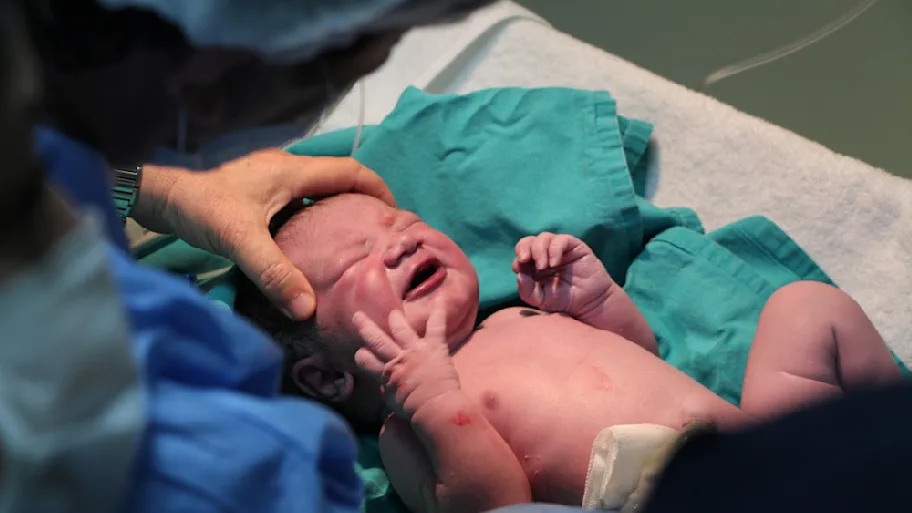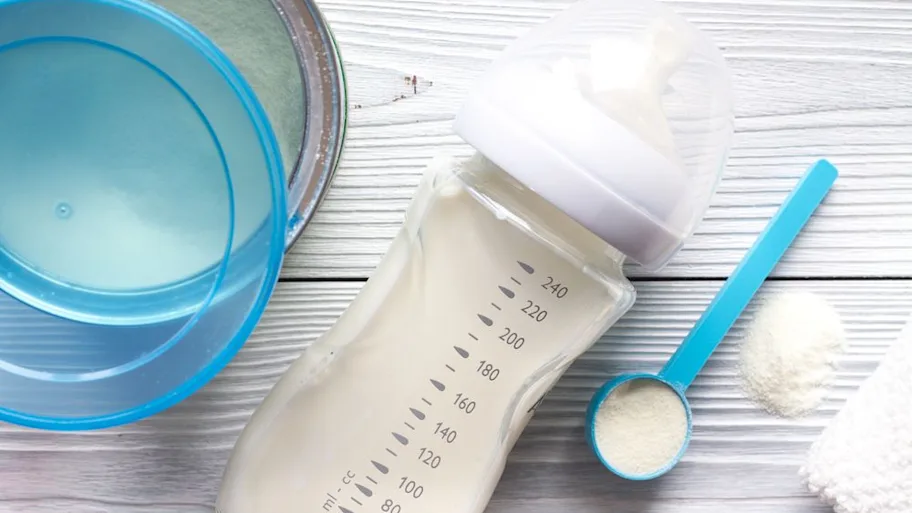
- Science news
- Featured news
- Babies’ gut microbiome not influenced by mothers’ vaginal microbiome composition
Babies’ gut microbiome not influenced by mothers’ vaginal microbiome composition
By Deborah Pirchner, Frontiers science writer

Image: Shutterstock.com
Alterations in babies’ gut microbiomes during early life are commonly associated with negative health outcomes later on, including asthma and obesity. Gut microbiome alterations are frequently attributed to how a baby is delivered (birth mode). This gave ground to practices like vaginal seeding, aiming to expose babies born via C-section to their mother’s vaginal microbiome. Canadian researchers have examined this supposed interplay between infant microbiome composition and birth mode and found that mothers’ vaginal microbiome composition does not affect microbiome development of babies.
It has been a longstanding assumption that birth mode and associated exposure of newborns to their mothers’ vaginal microbiome during delivery greatly affects the development of babies’ gut microbiome.
To test the scientific validity of this assumption, a team of Canadian researchers has now published a study in Frontiers in Cellular and Infection Microbiology in which they examined the effect of maternal vaginal microbiome composition on the development of infants’ stool microbiome at 10 days and three months after birth.
“We show that the composition of the maternal vaginal microbiome does not substantially influence the infant stool microbiome in early life,” said Dr Deborah Money, a professor of obstetrics and gynecology at the University of British Columbia and corresponding author of the study. “It does not appear that exposure to maternal vaginal microbiota at the time of vaginal birth establishes the infant stool microbiome.”
Unpredictable baby gut microbiome
For their study, which is one of the largest mother-infant cohort studies to date, the researchers recruited more than 600 Canadian women who planned to deliver both vaginally and via C-section.
Maternal vaginal swabs were collected prior to delivery. Stool samples from the babies were collected within 72 hours of delivery, as well as at 10 days and three months after birth.
The scientists found that regardless of birth mode and concomitant exposure to maternal microbiome, mothers’ vaginal microbiome composition does not predict the composition of babies’ stool microbiome at 10 days or three months after birth.
“From this study and other follow-up work, we were able to show that transfer of vaginal bacteria to the infant gut is limited, and that the maternal vaginal microbiome is not a large contributor to the bacterial community that develops in a baby’s gut after birth,” said Scott Dos Santos, a PhD candidate at the University of Saskatchewan who conducted the lab work and data analysis. “On the contrary, other maternal sources like breast milk and exposure to the environment likely play a much larger role.”
The research team is conducting further work to analyze the breast milk microbiome and better understand its relationship with infants’ gut microbiome.
Download original article (PDF)
Antibiotic use may explain microbiome discrepancies
Yet, at both 10 days and three months, the scientists found statistically significant differences in microbiome composition by mode of delivery. To investigate how these might be explained, they looked at clinical factors.
“The differences we found between infants stool microbiome composition by mode of delivery in early life seemed to be primarily influenced by exposure to antibiotics around the time of birth,” explained Money.
The researchers’ assessment of antibiotic use did not disprove the finding that the maternal vaginal microbiome is not predictive of infant stool microbiome composition.
Large dataset for robust results
Study participants were recruited from three hospitals across British Columbia to ensure a large, sociodemographically diverse and multi-ethnic study population. It was also vital to recruit enough individuals who planned to deliver vaginally or by C-section to secure appropriate participants for both groups of interest.
“This study underscores the need for robust methods with large enough sample sizes to ensure clinical conclusions drawn from human microbiome studies allow one to control for factors affecting natural variability in human microbiomes across individuals,” Money stressed.
The researchers also pointed to the study’s limitations: “We did not plan to, nor did we collect maternal stool microbiome samples, so we cannot draw any conclusions on this as an influence,” Money pointed out.
REPUBLISHING GUIDELINES: Open access and sharing research is part of Frontiers’ mission. Unless otherwise noted, you can republish articles posted in the Frontiers news site — as long as you include a link back to the original research. Selling the articles is not allowed.






